Legacy Stories
Sam Boghosian
Sam Boghosian was born in Fresno, California to Armenian immigrant parents in 1931. He overcame polio to become a star offensive lineman at UCLA and was instrumental on their undefeated 1954 National Championship team. He later became a two-time Super Bowl Champion coach with the Raiders before retiring to Palm Springs. In the last decade of his life, Boghosian experienced a severe cognitive decline. After his death in February 2020, Boghosian was diagnosed with Chronic Traumatic Encephalopathy (CTE). His daughter Jody Schiltz is sharing his story to show her dad’s lifelong legacy of generosity, overcoming adversity, and his parting gift to CTE research.

By, Brandon Boyd
“Where’s Sam’s book?” was a common refrain in the Boghosian household.
Sam Boghosian kept a detailed notebook about every single day in his life. The notebook was stuffed with business cards from everyone he met. If a question arose, the notebook had the answers.
His tedious notetaking started when he was young. His daughter Jody Schiltz even found a notebook from when he played on the offensive line for the 1954 UCLA National Championship team. He drew each play out and meticulously listed his responsibilities to accompany each diagram.
But flash to 2015, and Jody had to intervene to help her dad file his taxes. The following year, he forgot to ask for help on them. By 2018, his family had to take the mail away from him because otherwise it would never get read.
“He'd be abhorred with this person,” Schiltz told her mom. “This is not who he is.”

The Boghosian family fled from Turkey during the Armenian Genocide in the early 20th century. The family settled in Fresno, California and made a living as farmers.
Sam was born on December 22, 1931. His family was a magnet for tragedy. In a 14-month span, when Boghosian was just 11 years old, he and two of his siblings contracted polio. The polio killed one of his sisters, his older brother went missing in action as a jet fighter in World War II, Boghosian’s father died, and then his family farm burned to the ground.

His polio led doctors to believe Boghosian would never walk again. One of his calf muscles had severe atrophy and he had to wear a lift in one of his shoes, but Boghosian defied the odds and taught himself to walk again at a young age. He compensated well enough for his disease to become a very good athlete. At just 5’10,” he starred on his high school football team and earned a scholarship to play offensive and defensive guard for UCLA.
Before enrolling on campus, head coach Red Sanders sent Boghosian a letter warning him about being out of shape. Boghosian embraced hard coaching then and throughout his life. Schiltz believes his coaches filled a void in his life.
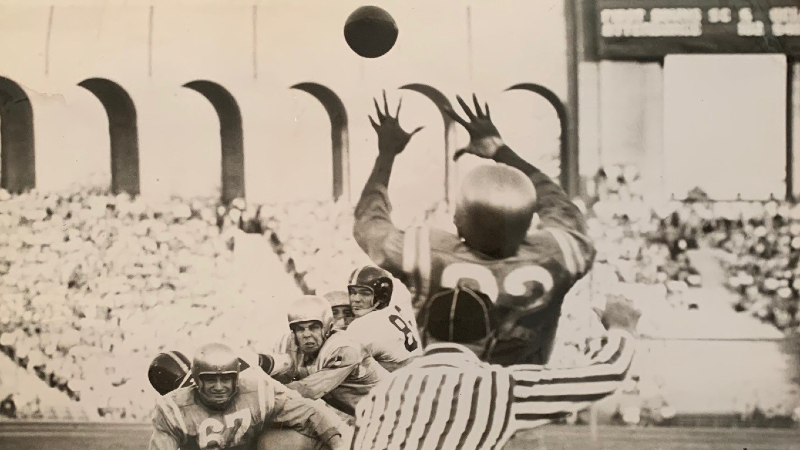
“He didn’t have a father figure,” Schiltz said. “But he had these people in his coaching career that he emulated and strived to be like.”
After finishing at UCLA, Boghosian was drafted by the San Francisco 49ers but turned down professional football for the more lucrative option of joining Sanders’ staff as an assistant. It was the start of his 30-year coaching career.
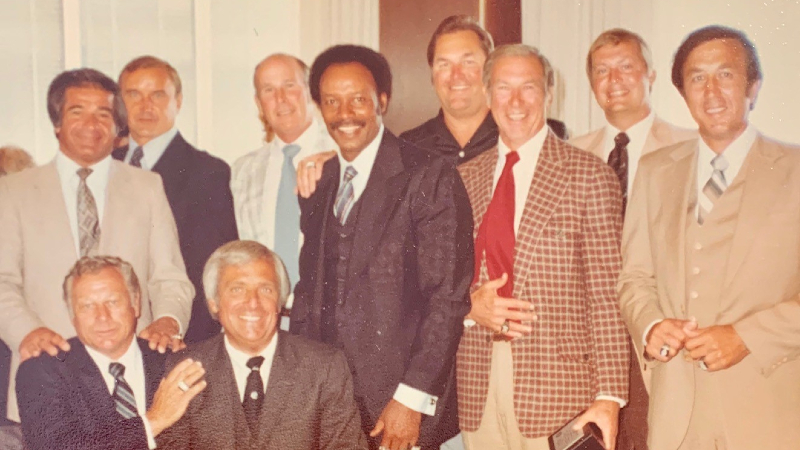
Sam Boghosian, far left, with the rest of the Oakland Raiders coaching staff in 1982 when they received their Super Bowl Championship rings from the prior season.
After UCLA, Boghosian held various coaching jobs at Oregon State University and then in pro football with the Houston Oilers, Seattle Seahawks, and the Oakland and Los Angeles Raiders.
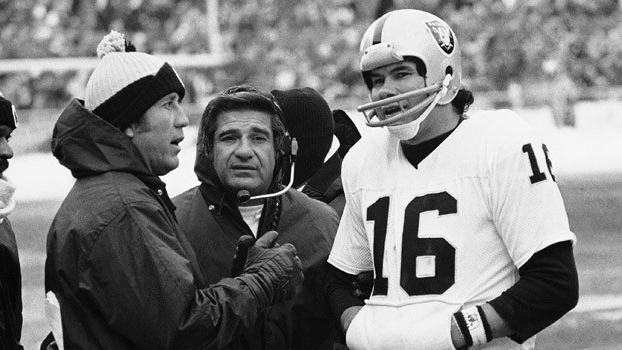
His players called Boghosian “The Whip” because he held an impossibly high standard. He kept a sign on his desk that said, “WINNING SOLVES ALL PROBLEMS.” He won two Super Bowl rings with the Raiders in 1981 and 1984 under head coach Tom Flores.
“He just didn’t accept failure,” Schiltz said.
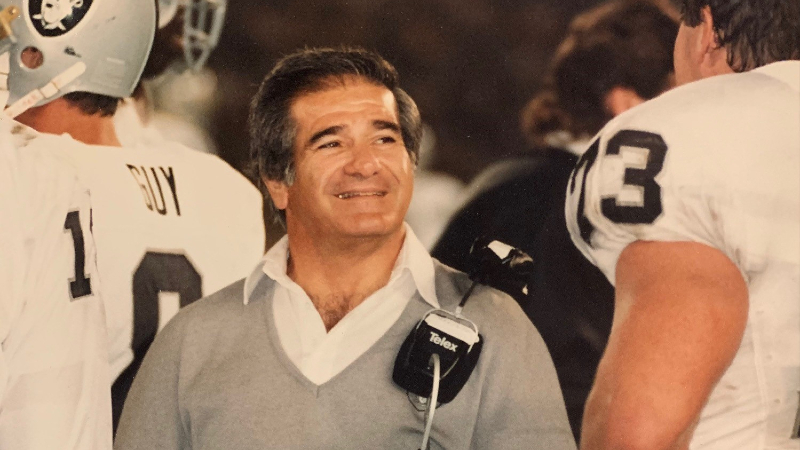
Bogohsian was a harsh coach but a loving friend and father who did anything for those close to him. Coaching created distance between Boghosian and Schiltz, his only daughter. He cried any time he had to part from her.
Family meant everything to Boghosian. He had a deep love for his surviving siblings and adored his many nieces and nephews.
“He was the gatekeeper for the whole family,” Schiltz said.
In 1961, the Bel Air Fire wrecked the community surrounding UCLA. Schiltz tells the story of how Boghosian knew his friend’s home was in peril so he rented a water pump. Boghosian pumped the home’s pool and used the water to put out the fire. He asked for nothing in return.
Boghosian and his wife Judy moved to Indian Wells, California before the turn of the century. There, Boghosian’s generosity manifested in countless charity golf tournaments. He was especially active in the Triple X Fraternity, an organization rooted in expanding the rights of access of young Armenian Americans.
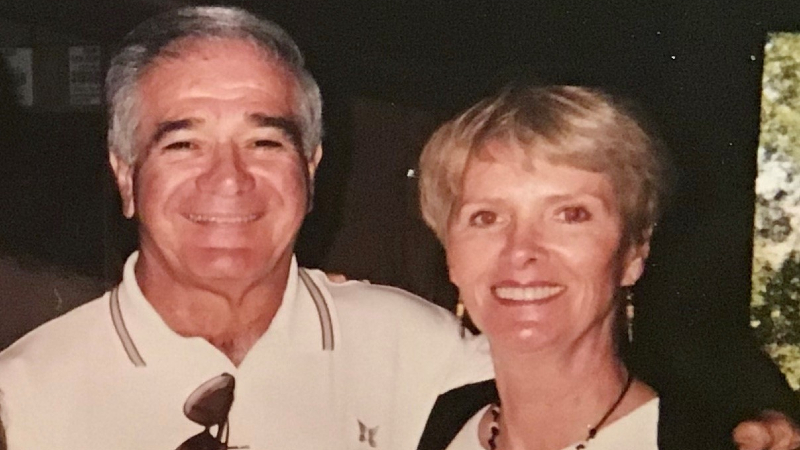
In just the eight years he played, football took an immense toll on Boghosian’s body. He had cervical neck surgery and several knee surgeries. His feet hurt constantly.
He adored Schiltz’s son, Braden. Braden was diagnosed with autism early in childhood. Boghosian’s difficulties grasping his grandson’s disability were one of the first signs of his cognitive failure. He couldn’t understand why Braden would have outbursts or not pick up golf like he wanted him to.
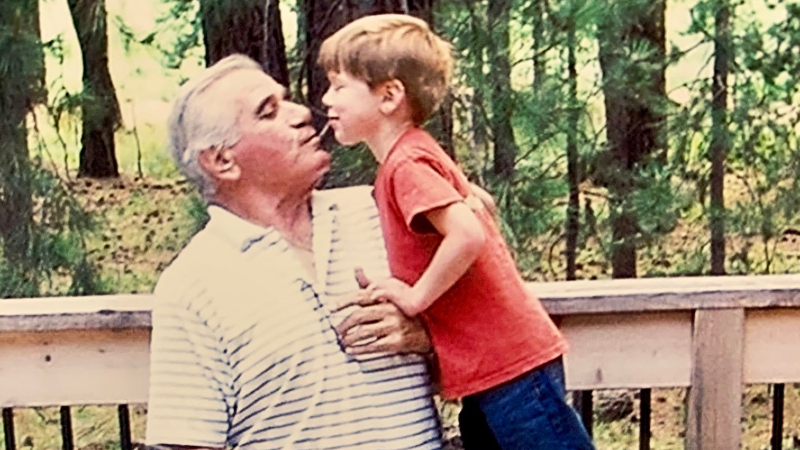
Still, Boghosian showed his grandson off to anyone who would listen. He took Braden with him golfing and to the many breakfasts he had with friends. Until Braden stopped wanting to be in a car with his grandfather.
The family saw Boghosian slip, bit-by-bit. His affect was always the same, but the frequency with which he would repeat himself increased over the last five years of his life. Even after the DMV revoked Boghosian’s driver’s license he insisted it was still in his pocket.
By late 2019, Schiltz made frequent trips to Palm Springs to help care for her father. At the time, a neurologist who saw Boghosian posed that his problems were not due to dementia but could be caused by CTE.
Schiltz and her family kept CTE in the back of their minds but hadn’t considered the idea of donating Boghosian’s brain for research until early 2020, when her husband Brian was watching the Aaron Hernandez documentary on Netflix. The film’s discussion of CTE sparked the idea of brain donation.

Shortly after seeing the film, Schiltz connected with Lisa McHale, CLF’s Director of Legacy Family Relations to arrange for her father’s brain to be studied after death.
“Dad would have loved that,” Schiltz said.
On February 23, 2020, he died from congestive heart failure at 88 years old. Upon his death, Schiltz received an outpouring of support from people whom he had coached or helped at some point. A former Oregon State player remembered Boghosian paying him a dollar to cut his hair as he had no time for hippies. Others remembered how he used his rolodex of business cards to help them find jobs or make connections.
As the family mourned Boghosian’s passing they learned he was diagnosed with Stage IV (of IV) CTE. Schiltz is thrilled she reached out to McHale before her father’s death.
“Now we know that's going to help other people,” Schiltz said.
Boghosian loved football and the game took him out of his modest beginnings in Fresno. He loved sports but Schiltz believes her father would have advocated for children to play soccer before they start tackle football, preferably in high school.
Schiltz and her family live in Atlanta. Because Boghosian kept everything he ever owned, she found his UCLA uniforms, notebooks, helmets, and other treasures he kept. She sent the memorabilia to Atlanta’s College Football Hall of Fame, where it is now displayed. Recently, Braden visited the exhibit and was awed by his grandfather’s place in football history.
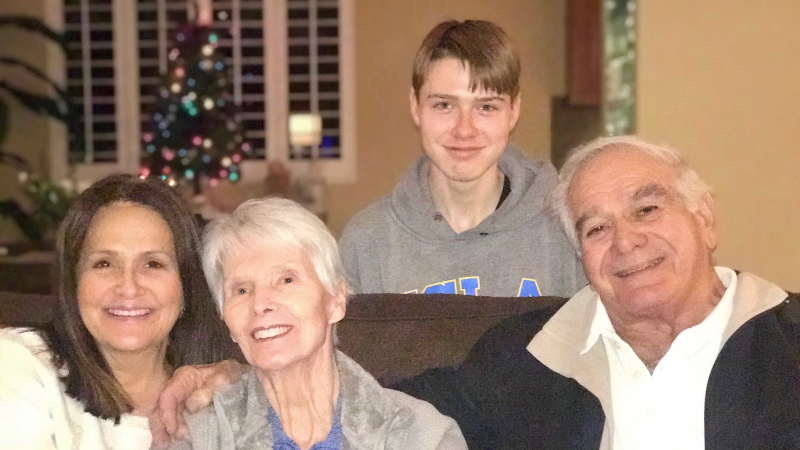
Schiltz once gave her father a book to fill out with details about his life. Its pages remained blank. She wishes she had recorded her father talking more about the early parts of his life. She would advise any child who suspects their parent may have CTE to do the same. But even if her father never got to tell her about everything he went through, she’s heard about the profound impact he made in life from plenty of others.
“No one's ever said anything unkind to me about him,” Schiltz said.
You May Also Like

Hockey Hall of Famer and 4-time U.S. Olympian Angela Ruggiero wants to be an inspiration for female athletes to participate in concussion and CTE research.
Watch: Ruggiero on her legacy
Former NFL player and NFLPA President Eric Winston took the #MyLegacyPledge to help the next generation of athletes.
Eric Winston on his legacy